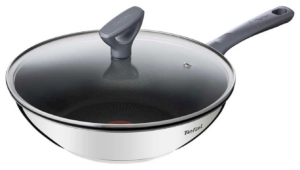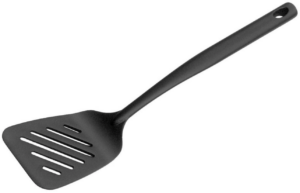Done right, stir-frying is a fast, fresh and fabulous way of cooking Asian food. To help you achieve wonders with your wok, here are my tips on what to avoid…
Stir-frying is one of my favourite cooking techniques and often features in Inbox Dinners recipes. But have you ever wondered how to make stir-fry the best it can be?
Unless you’re a fan of stewed meat, soggy veggies and off-balance flavours, there are several things you’ll want to avoid. Read on for the 10 most popular mistakes when stir-frying.
But first… what is stir-frying?
Stir-frying is a way of quickly cooking food (usually in a wok) over high heat and with only a little oil. Because of this, it helps ingredients stay crunchy, colourful and downright delicious. There are many reasons why you’ll want to master stir-frying and avoid these doozies…
Guys, it’s all about the pan when it comes to stir-frying – those deep, sloping sides really help concentrate the heat and cook food quicker. You can use a deep, wide frying pan or skillet, but I personally use a Tefal non-stick wok similar to this one.
Each of your stir-fry components needs to be cut into small, bite-sized chunks. This helps everything cook uniformly, quickly and evenly.
#3: Being unorganised
Stir-frying happens quickly – like, super quickly. Here’s the fundamental rule: always, ALWAYS get everything ready before you start cooking. Your prep is hands down one of the most important keys to stir-frying success. If you follow the steps in Inbox Dinners recipes then don’t worry, you’re sure to nail this!
#4: Not getting the pan hot enough
You want your wok SCARY HOT, so crank up that heat. You want your wok absolutely searing so that when your ingredients make contact with it, they’re going to be hitting it at the perfect temperature for fast and hard cooking.
#5: Adding the oil before the wok is hot
This is another big stir-frying no-no. You want to ensure you preheat your wok before you add your cooking oil. If you add oil to a cold wok, you risk your ingredients not cooking all the way through.
#6: Throwing every ingredient in at once
Some ingredients are going to take a bit longer than others (broccoli, for instance, is a bit hardier), so you’ll need to add things in stages rather than all at once. Why? Because when you overcrowd the pan, things start steaming rather than searing. Just like us people, ingredients need their personal space, my friends!
#7: Crowding the protein
This leads me nicely on to this point: when it’s time to cook your meat, you want each piece to make contact with the wok. That way, you get a lovely char on the edges and even cooking. Whether it’s minced, sliced or chunks, spread your protein out around the bottom of the wok, and leave it for a few moments. Trust me: this is essential stir-frying 101!
#8: Using a round spoon
Believe it or not, there is definitely a best utensil for stir-frying. And it is NOT a round spoon. Those bad boys aren’t going to let you get in there and scrape up all the golden goodness off the pan. Choose a spatula instead: wood or plastic ones will protect the coating on a non-stick pan, while metal is fine for a stainless steel wok.
#9: Your sauce isn’t punchy enough
For maximum deliciousness, you want your sauce to be super concentrated and bold – you’ll often have juices and watery liquid coming out of the protein and/or vegetables anyway. (Just be sure to not overcrowd, otherwise, you’ll encourage everything to get a bit soggy!) Making it from scratch is best and that’s another reason why we love Inbox Dinners!
#10: Using the wrong oil
Because stir-frying uses a very high heat, you want a cooking oil that has a high smoke point. Coconut oil or Olive oil are my trustee go-to’s, and all have a neutral taste, so won’t affect flavour. Do not – I repeat, DO NOT – use butter!
#11: Using fresh rice
You NEED day-old cooked rice that’s been refrigerated or precooked, packaged store brought rice is perfect – because the rice dries out and becomes crumbly which is what you need so your fried rice isn’t clumpy and mushy. No one likes clumpy, mushy rice…
#12: Best rice for stir frys
While we’re on the topic of rice. Long grain white rice or other white rice, cooked, then refrigerated overnight or frozen then thawed. I repeat rice should be dry and crumbly, not sticky, clumpy or mushy.
And there you have it, 11 common mistakes to avoid when stir-frying. Now it’s time to practise your skills… let’s get cooking together!




